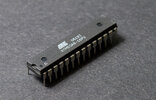R1=100 ohm, R2=500 ohmThank you. I will look into using PWM.
What are the values of R2 and R1
It will run hot with either transistor, but not because of the voltage rating your referring to.I cannot get TIP121 (supplier has only 1 TIP120) but I see a comparable part is TIP122. The voltage is higher. I think that means the additional voltage in 122 will burn even hotter than the tip121
The coding structure is proprietary to Arduino, and is in a file called a "sketch". You write and debug the code contained in a "sketch" using (free) Arduino IDE software, then compile the code into "machine code" that the arduino understands. The compiled code is then uploaded into the Arduinos' memory. The Arduino is then rebooted and executes the code. This whole process is done using the Arduino IDE software while having an Arduino device connected via USB cable to your computer. Its very simple, but can get complex depending on the design.Something about adrino that I could not figure out. When I wrote code I could create an installation program so the user could use what I created without the need to have the platform I designed it in. With adrino I assumed it worked the same way. I create a chain of events then burn them to a chip. That chip is removed from the adruino and placed in the circuit board. I can not find however any documentation to say it does work like this. It appears that you burn the data to the adrunio unit and run the program from the adrunio unit. I dont see how you "detach" what you created and apply it to your circuit without the adrunio being part of the project.
Here is a link that describes more:
Everything You Need to Know about Arduino Code
Last edited:


